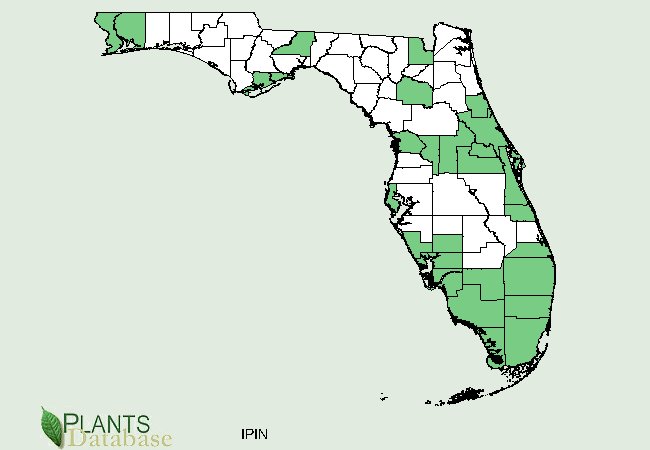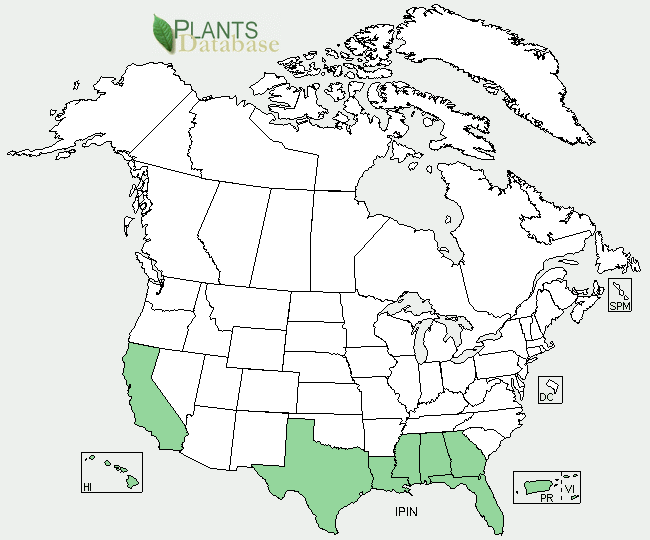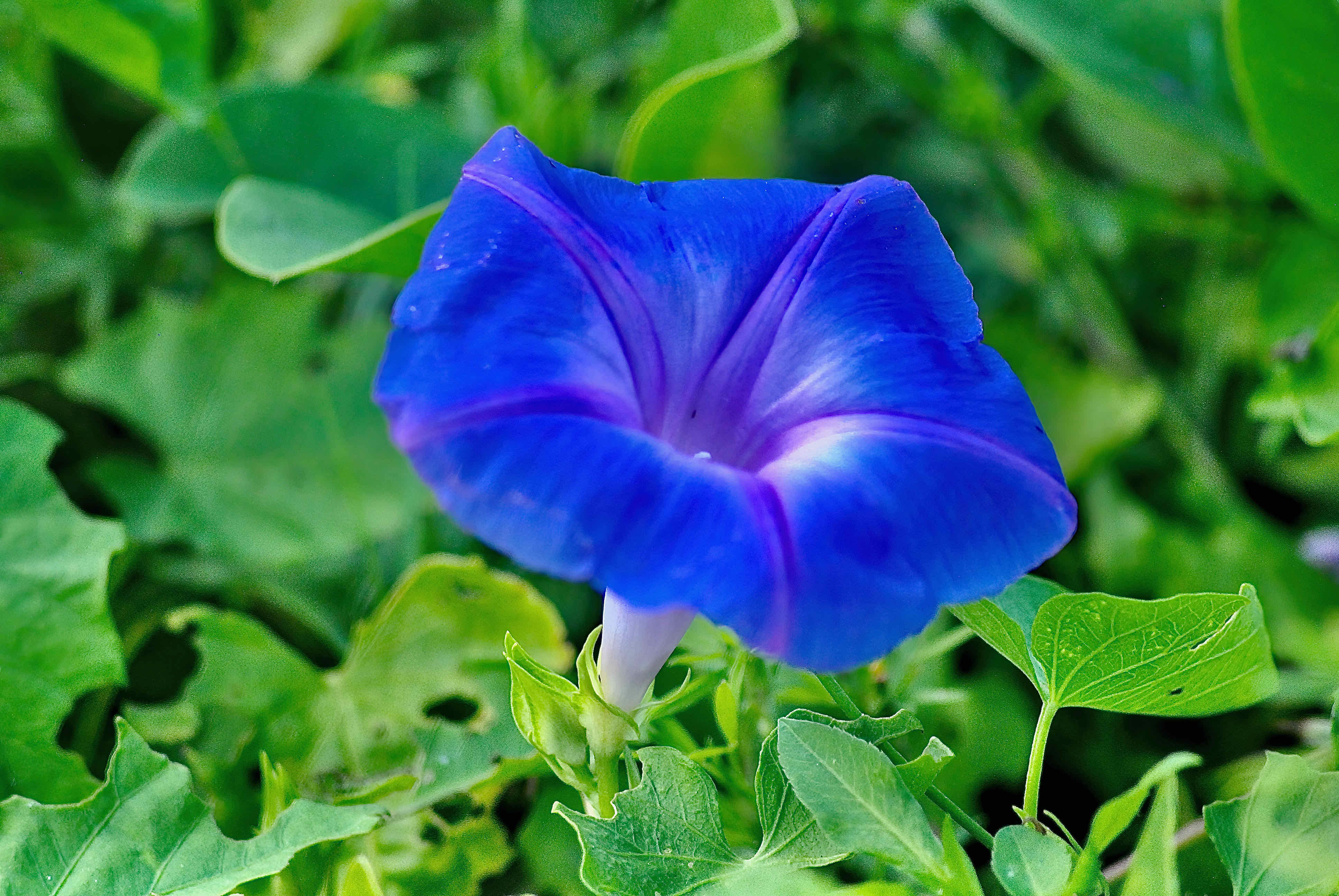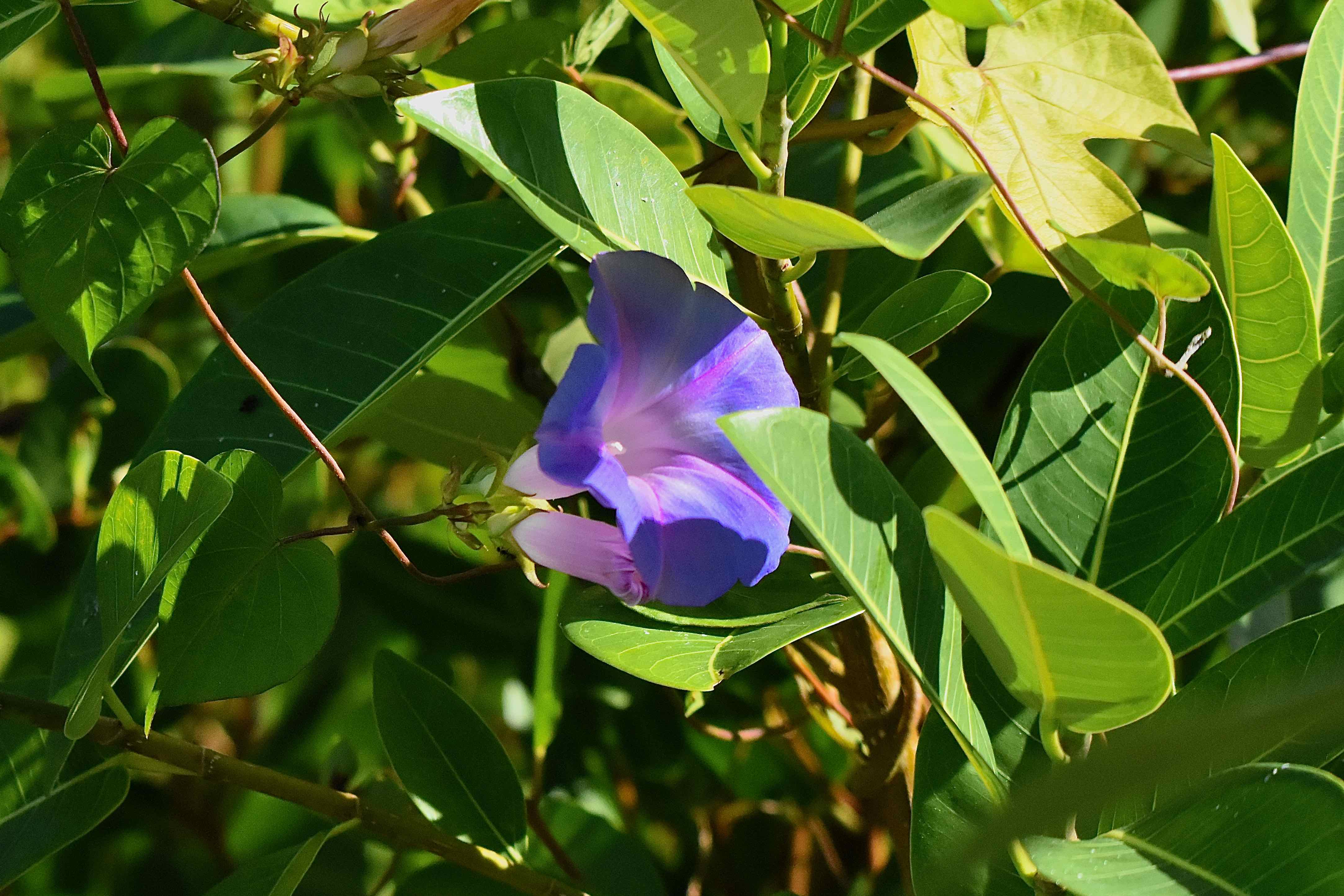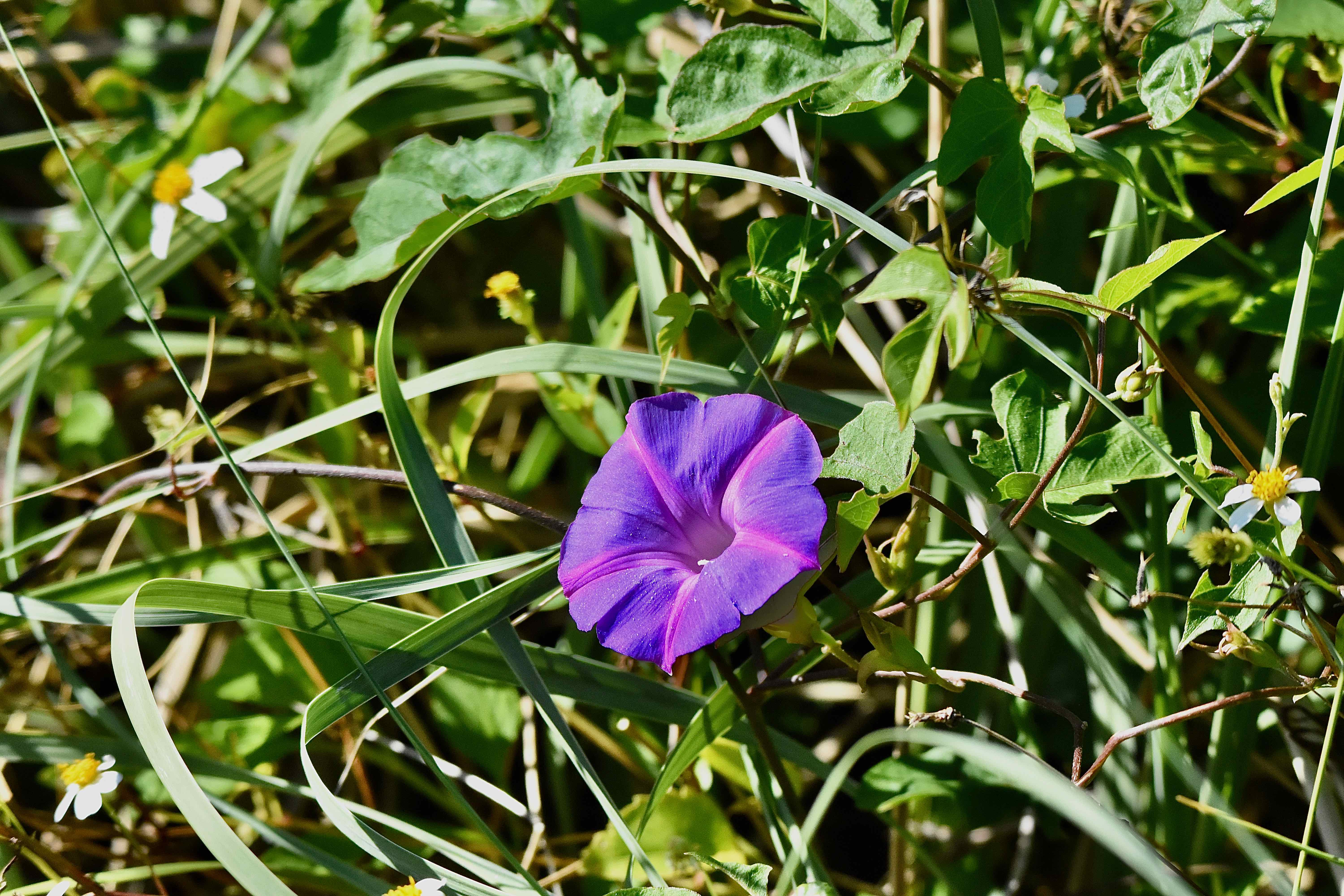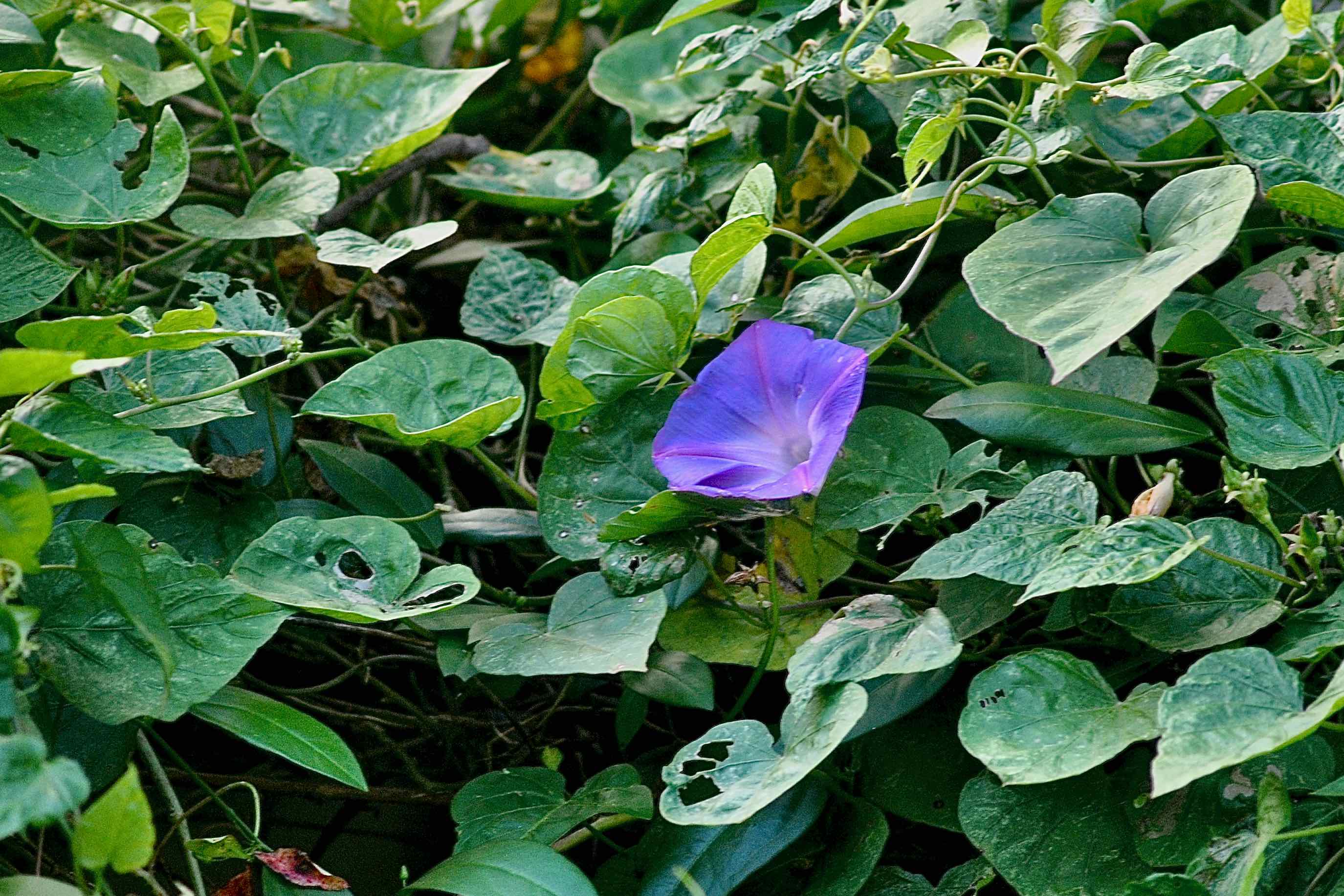
Ocean-blue morning glory, photographed at Dagny Johnson Botanical State Park, Key Largo, Monroe County, in 2013."
There are about 25 varieties of native and nonnative morning glory in Florida. The ocean-blue morning glory, Ipomoea indica , has to be among the most beautiful, not to mention one of the most widespread found in South Florida.
But which is it, native or non? It's not an easy question to answer. In fact it might not have a conclusive answer.
Ocean-blue morning glory is found in warmer places pretty much around the globe, in South America, Africa, Asia, Australia — and right here in the United States, along the Gulf Coast, Florida to Texas, and in California.
It's found in Florida's northwest corner and as far south as the Florida Keys. Authoritative Florida sources that we rely on, including the Institute for Regional Conservation, the University of Florida's Center for Aquatic and Invasive Plants and University of South Florida's Atlas of Vascular Plants, all list it as a native without reservation or qualification.
The U.S. Department of Agriculture, however, classifies it as introduced throughout its U.S. range, including Hawaii, Puerto Rico and the U.S. Virgin Islands as well as the mainland. The government of the Australian state of Queensland in a paper assessing the invasive threat ocean-blue morning glory presents Down Under, cites one source that lists tropical Asia as the plant's home, but adds that it's so widespread that it's difficult to say where it's from. Of course, the next question is, if it's not from here how did it get here? We have no definitive answer.
Ocean-blue morning glory is a perennial twining vine, and a rapid, aggressive grower and its climbing ability is considerable. It can climb as much as 45 feet. It extremely aggressive and can form dense mats that smother trees and shrubs.
The flowers are large, about two to thee inches across, and funnel shaped typical of morning glories. The throat has a star pattern that creates a pentagonal shape. The flower is typically deep blue when it emerges in the morning, with red or pink outlining the star pattern. As the day goes on, the deep blue fades into a lighter shade. Ocean-blue morning glory can vary somewhat in color. In the Florida Keys, the flower can have a white throat. Blooming season is year round.
Ocean-blue morning glory is a perennial; according to the Queensland report, it can live as long as 25 years. It's widely used as a landscaping plant because of its gorgeous flower; its rapid growth and thick vegetation make it popular for trellises, arbors, fences et al. But it needs to be used with caution, especially in smaller gardens.
Native Hawaiians used various parts of the plant to make a variety of remedies, for back pain, to treat flesh woods and broken bones, as a laxative and as a strengthener for mothers and infants.
It's classified as a prohibited noxious weed in Arizona and as a noxious weed in Arkansas, but both states generally look unkindly at most members of the morning glory family.
Other names common names and spelling variations include blue dawn flower and blue morning glory and oceanblue morning glory. Ocean-blue morning glory is a member of Convolvulaceae, the morning glory family.
Photo Gallery — Click on photo for larger image
U.S. Department of Agriculture Distribution Maps
